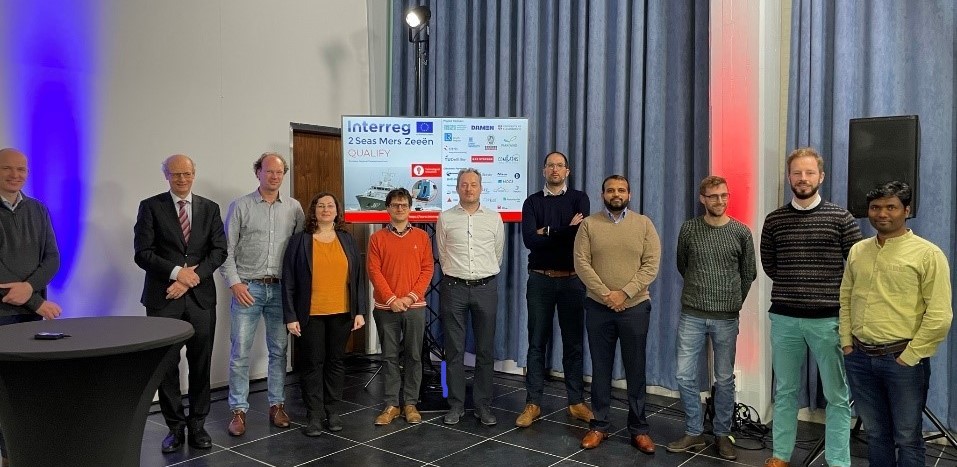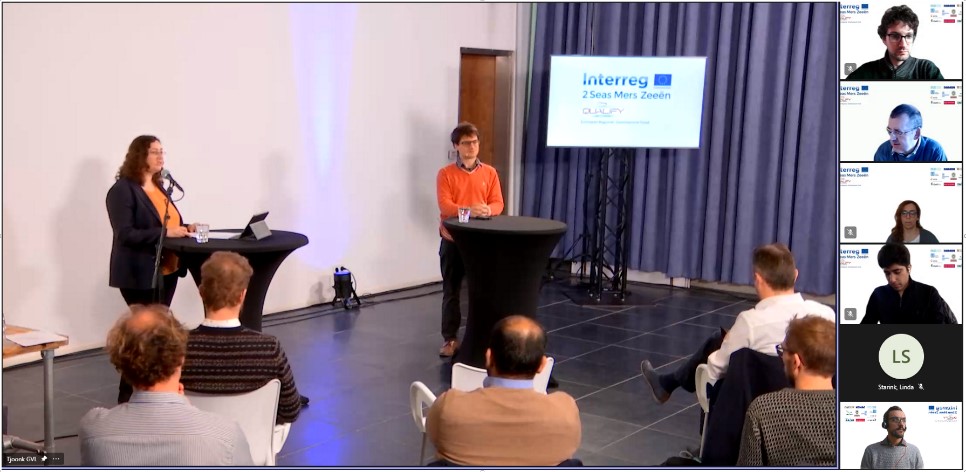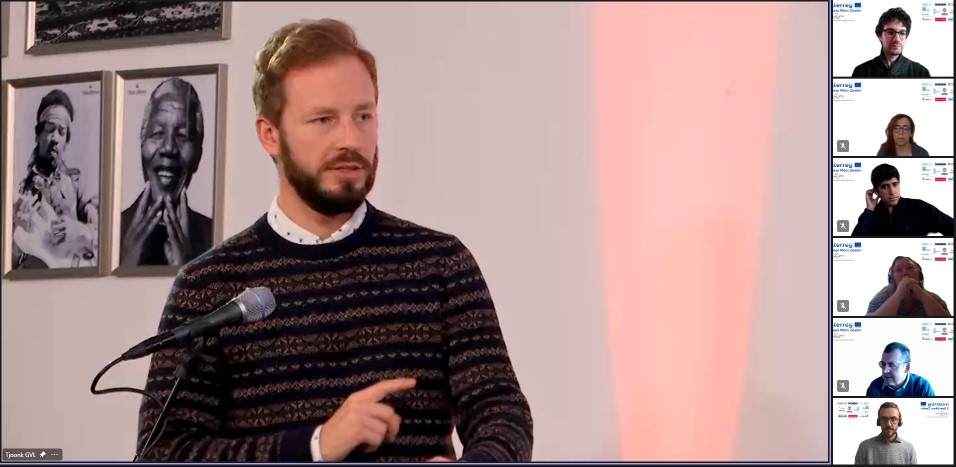On Tuesday 23 November 2021, the Final QUALIFY event took place as a hybrid event, and was also streamlined for a wider public. The QUALIFY project ran for more than four years and was funded from the INTERREG 2 Seas Mers Zeeën programme.
Background
The maritime landscape is facing a wide array of challenges: climate change, call for decarbonisation and an overall need for sustainable operations. One way to reduce fuel consumption is to reduce the weight of the primary structure, which asks for the development of durable, lightweight solutions that can withstand such loads under extreme conditions, without compromising safety.
The shipbuilding industry has been exploring the use of adhesively bonded hybrid joints in primary structures, but at present misses the certification guidelines to orient the industry when certifying new designs using such hybrid assemblies.
Goal of project
Funded by the European INTERREG 2 Seas Mers Zeeën programme, a multi-disciplinary and multi-national team has worked on the QUALIFY project for the past four years to remove the technological barriers that currently prevent the widespread application of hybrid structures (metal to composite) in the industry. The combination of expertise and capabilities from academia, industry and classification societies, and the availability of a unique testing infrastructure, provided the best conditions to realise the project’s main goals: the formulation of a regulatory framework and a reliable inspection and maintenance technology, enabling incorporation of hybrid joints in future design for ships.
QUALIFY Final Event
On Tuesday 23 November 2021, the Final QUALIFY event took place as a hybrid event, and was also streamlined for a wider public.
The programme of the event consisted of presentations highlighting the achievements of the project, and was concluded with a lively discussion.
Special thanks go towards DAMEN and Tjoonk for their assistance with organizing the event.
Conclusion
The regulatory framework for the application of hybrid joints in primary structures paves the way towards a more sustainable maritime industry. This lightweight solution realizes a reduction of fuel consumption up to 7% and a considerable decrease of harmful emissions. Furthermore, the hybrid joints enhance ship stability, lead to greater safety during production and lower the need for maintenance.
The following partners were involved in the project:
- Management & Coordination: Materials innovation institute M2i
- Academia: Cambridge University (UK), Technical University of Delft (NL), Ghent University (BE)
- Industry: DAMEN (NL), BAE Systems (UK), Parkwind (BE), Com&Sens (BE), Sirris (BE), LM Wind Power (NL)
- Classification societies: Lloyd’s Register (UK), Bureau Veritas (Fr)
________________________________________________________________________________________________
Please watch our Final Movie to learn about the QUALIFY project results.
________________________________________________________________________________________________
If you missed the event, please find the links to all presentations below:


